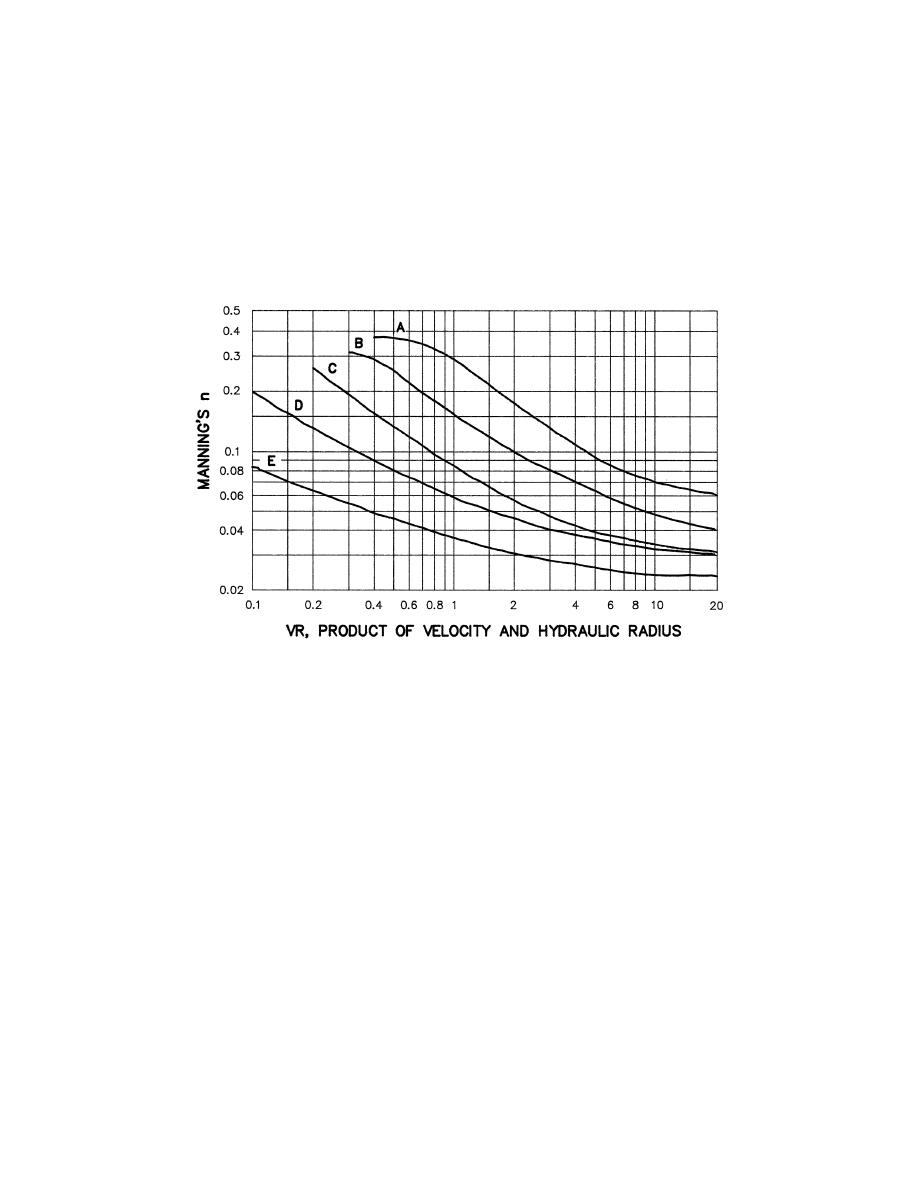
Soil Conservation Service (SCS) Roughness for Grass
Cover
Hydraulic roughness curves for five types of grass cover were published by
SCS (US Department of Agriculture 1954), Figure 2.5. Each curve type, A
through E, refers to grass conditions described in Table 4. EM 1110-2-1601
(USACE 1991, 1994) presents an example of the use of these curves.
Figure 2.5. n-value relationships for grass cover.
Distribution of Hydraulic Roughness
Hydraulic roughness should be prescribed between each pair of coordinates,
i.e., for each panel, as shown in Figure 2.6. It is important to establish which
portion of the channel cross section is bed and which is bank because the bed
roughness predictors apply only to the channel bed. That is, typically the
vegetation roughness and bank angle do not permit the bed load to move along
the face of the banks. Therefore, the Limerinos and Brownlie n-value equations
should not be used to forecast bank roughness, i.e., should not be assigned to the
channel banks.
On the other hand, the point bar is a natural source-sink zone for sediment
transport. Consequently, it is a location at which Limerinos and Brownlie
equations would apply.
19
Chapter 2
Theoretical Basis for SAM.hyd Calculations



 Previous Page
Previous Page
